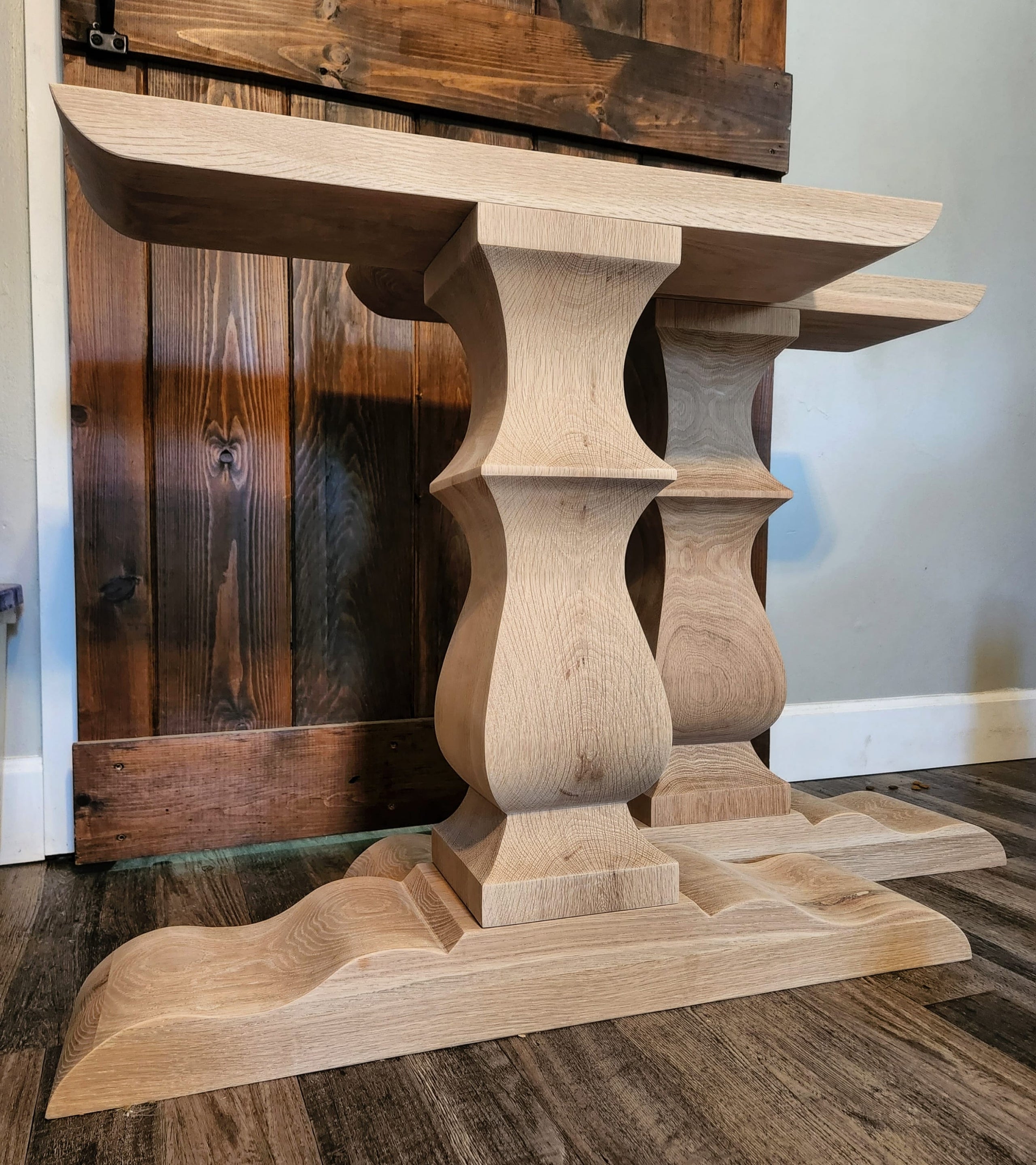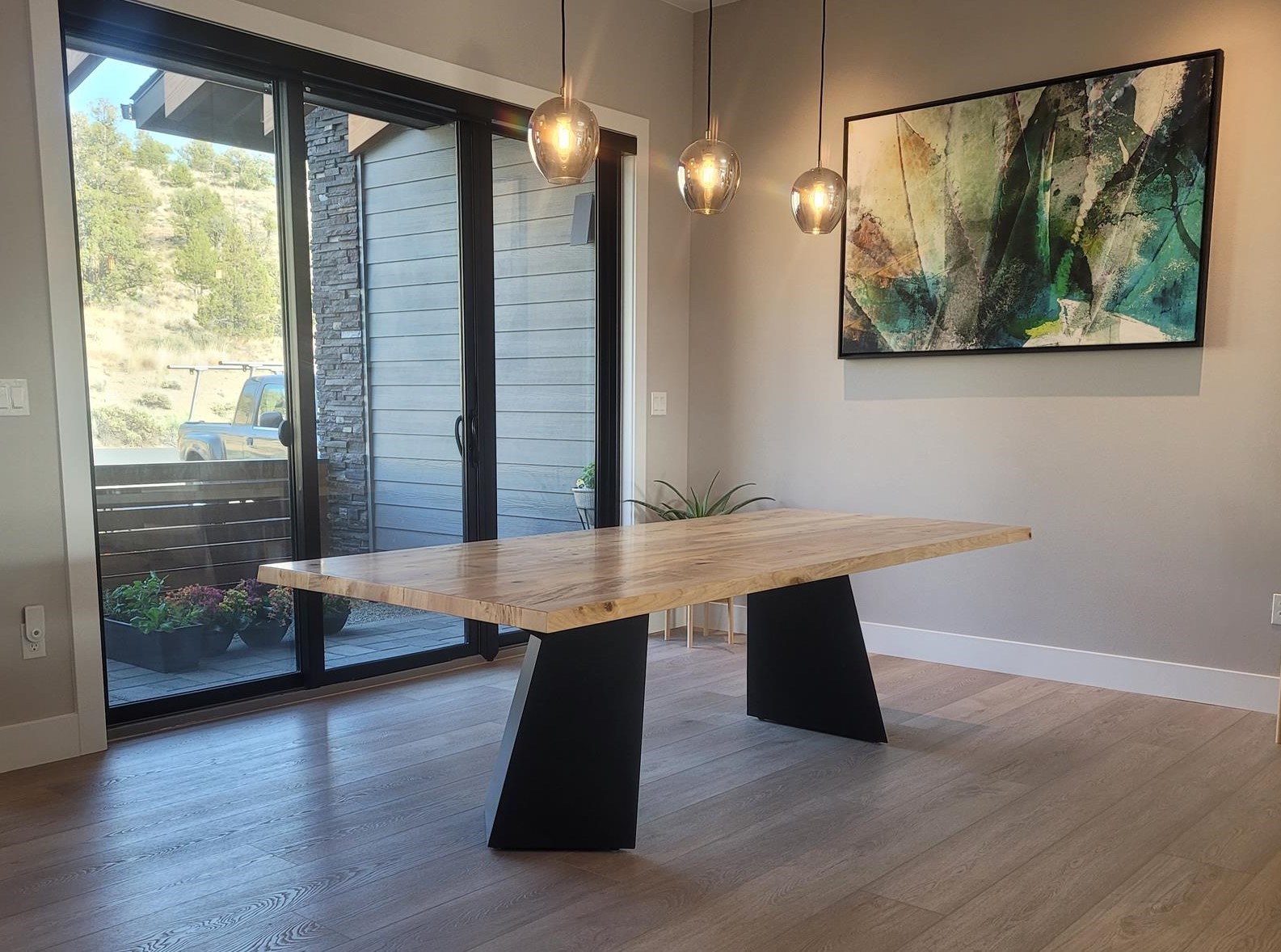Leading Patterns in Dining Room Table Legs to Raise Your Eating Area
Leading Patterns in Dining Room Table Legs to Raise Your Eating Area
Blog Article
Choosing the Perfect Table: What Styles Work Best for Your Home?
Selecting the excellent dining table for your home can be a nuanced procedure that balances visual appeals and capability. Whether your room leans in the direction of standard beauty, contemporary minimalism, rustic charm, or industrial stylish, the variety of designs available can satisfy varied tastes. Each layout provides one-of-a-kind benefits and difficulties that can either enhance or disrupt your eating area's harmony. Recognizing exactly how various materials, forms, and dimensions communicate with your existing style is important. To browse these choices successfully and locate a table that genuinely enhances your home, consider the complying with facets thoroughly.
Evaluating Your Area
Examining the measurements and design of your eating location is an essential primary step in choosing the excellent eating table. Begin by gauging the size and size of the area, accounting for doorways, windows, and other architectural features that could influence table placement. This guarantees that your table not only fits however likewise enables comfortable motion around it.
Take into consideration the number of individuals you typically entertain. A table should accommodate your household's daily needs while supplying enough flexibility for occasional guests. As a rule of thumb, allot a minimum of 24 inches of table width each to make sure a comfy dining experience.
It's also necessary to maintain proper clearance around the table. Preferably, there must be at the very least 36 inches in between the table edge and walls or various other furnishings, enabling easy accessibility and activity. For areas where chairs with arms or additional storage space systems like buffets are involved, increasing this clearance to 48 inches is advisable.
Lights and ambience play considerable roles too. Ensure that your eating table lines up with existing lighting components or prepare for ample illumination solutions. This detailed spatial assessment warranties that your eating table not just fits physically however likewise balances with your room's general capability and aesthetic.
Popular Table Styles

Conventional eating tables usually include elaborate details, curved legs, and rich timber surfaces, evoking a sense of classic style. They are excellent for homes with traditional design or those wanting to add a touch of sophistication to their eating location.
Modern dining tables prioritize simpleness and tidy lines, typically incorporating materials like glass and steel. These tables are suitable for contemporary rooms, giving a smooth and uncluttered look that enhances minimalist layout ideologies.
Rustic table, on the other hand, emphasize all-natural materials and a handcrafted look - dining room table legs. They typically feature redeemed wood and a troubled surface, creating a cozy and inviting ambience. These tables work well in farmhouse-style homes or those looking for a relaxing, organic feeling
Industrial dining tables combine raw products such as metal and timber, frequently showcasing a practical aesthetic. This design is well-suited for loft spaces or urban spaces, adding a touch of rugged charm and longevity to the eating experience.
Each style uses distinct benefits, making it necessary to pick one that aligns with your home's total design and your individual choices.
Material Options
When selecting a table, the selection of material plays a critical function in establishing both the table's aesthetic appeals and capability. Timber, metal, glass, and composite materials each deal unique benefits and difficulties, making it vital to straighten the material with your home's design and lifestyle requirements.
Timber is a timeless and flexible choice, readily available in varieties such as oak, walnut, and mahogany. Understood for its toughness and warmth, timber enhances both traditional and contemporary interiors. It needs routine upkeep to protect against scrapes and bending.
Steel tables, frequently crafted from stainless-steel, light weight aluminum, or wrought iron, are praised for their modern appeal and robustness. They are especially fit for industrial or minimalist setups but can be vulnerable to dents and may really feel chilly to the touch.
Glass eating tables anonymous bring an air of style and visibility, perfect for smaller sized rooms as they develop an impression of even more area. While simple to tidy, glass can be prone to spots and needs cautious managing to prevent chips and fractures.
Composite materials, such as MDF and plywood, offer cost-effective and customizable options, though they may lack the longevity of natural products. Choosing the best material guarantees your eating see page table is both a functional property and an aesthetic pleasure.
Sizes And Shape Factors To Consider
After figuring out the suitable material for your table, the following consideration is selecting the appropriate sizes and shape to match your area. The shape of the table considerably affects the space's visual and capability. Rectangular tables, the most typical shape, are ideal for larger spaces and can suit a higher number of visitors. They additionally permit a much more official dining experience. Conversely, rounded tables promote a feeling of affection and are outstanding for smaller sized dining locations, encouraging conversation by eliminating edges and making everybody really feel similarly consisted of.
Dimension is equally vital and should be dictated by both the area's measurements and the number of individuals you intend to seat frequently. Generally of thumb, assign at the very least 24 inches of table size each to guarantee comfortable dining. In addition, consider the table's clearance space: there must go to the very least 36 inches between the table edge and the walls or other furnishings. This ensures that diners can useful source walk around quickly without feeling confined. Expanding tables supply flexibility if you often hold bigger celebrations, giving added seats when required without occupying extra area daily. Picking the appropriate sizes and shape ensures both practicality and aesthetic harmony in your dining location.
Matching Your Design
Picking a dining table that balances with your existing decor is critical in creating a cohesive and inviting area. A streamlined, minimalist table with tidy lines is ideal for a contemporary home, while a vintage, luxuriant table suits an extra conventional setup.
If your decor features warm tones and natural materials, think about a wood table to improve the natural feeling. Conversely, a glass or metal table may be much more proper in an area controlled by trendy shades and commercial components.
Appearance plays an essential function. A rough-hewn, redeemed timber table can include character to a rustic room, while a refined marble surface can elevate a lavish eating location. Ultimately, take into consideration the range and percentage of the table in regard to the area dimension and existing furniture. A well-matched table not only enhances aesthetic charm but also enriches the total eating experience.

Verdict
Selecting the optimal table necessitates careful consideration of area, design, products, form, and size (dining room table legs). Conventional tables complement traditional insides with abundant timber surfaces, while modern-day tables match modern setups through glass and metal. Rustic designs introduce warmth through natural materials, and industrial styles improve metropolitan settings with raw components. Integrating the eating table with existing style ensures both functionality and visual charm, adding to a cohesive and visually pleasing eating location.
Report this page